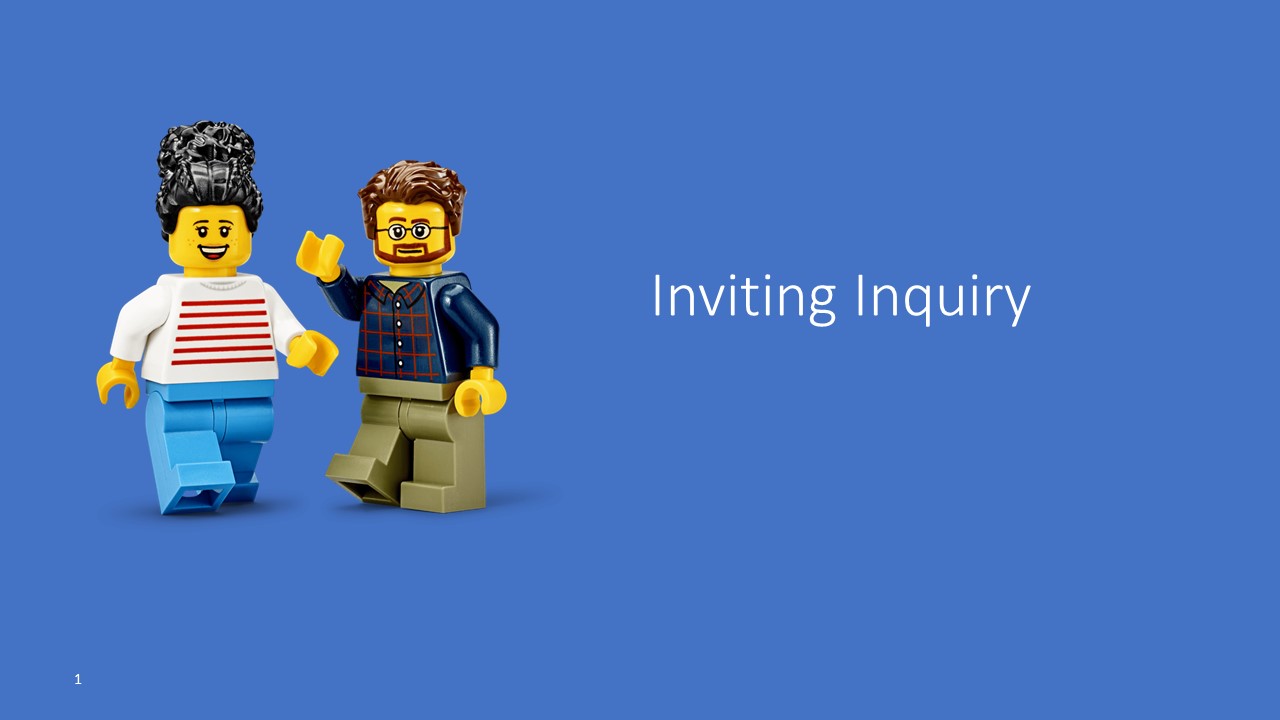Inviting Inquiry
Recognizing that LEGO® Education solutions are used in different learning environments, we offer a range of considerations to support meaningful learning, inviting students to engage in inquiry and sense-making.
Hey there, LEGO Educators--
To expand a bit from our latest Webinar about LEGO Education Unit and Lesson Resources, we came up with some considerations to support your use of our resources or the development your own plans. In the spirit of inquiry, we framed those considerations as questions, which we encourage you to use with students, too!
Whether you teach early elementary, middle, or high school students, inquiry is an integral part of learning through play to promote student agency, intellectual curiosity, and academic independence. Each of our Unit and Lesson Plans begins with a question that you can use to frame the learning or that you and your students can modify to meet your learning goals.
|
Directed Inquiry |
Guided Inquiry |
Open Inquiry |
|
--Is the question posed to students clearly understood but challenging to answer? --Do the selected resources support the task? --Is there an opportunity to personalize, iterate, or improve the outcome if student products are the same? |
--Are investigative questions co-created with students? --Are students encouraged to choose from a variety of resources? --Is there variation among student products or solutions? |
--Do students create their own questions to investigate or explore? --Are students able to identify and select appropriate tools and resources? --Are novel products or solutions encouraged and expected? |
What? Purpose of the Build
Does the LEGO build have a specific learning intention that is clear to the students?
Scaffold Skills
- To introduce students to the function of elements?
- To prepare them for a more advanced construction?
Express and Reflect
- To support SEL competencies?
- To facilitate personal reflection?
- To convey symbolic meaning?
Model to Inform or Explain
- To replicate or demonstrate an idea or process?
Model to Investigate and Analyze
- To perform tests or trials?
- To collect data?
- To discover why something happens?
Propose a Solution
- To create a novel product?
- To improve an existing model?
So What? Opportunities for Sense-Making
How will the students demonstrate learning? Will students submit a written response? Have an informal conversation? Create a video explanation? Can these questions be used throughout the activity as formative assessment?
Explain
- How was this built?
- What does X do?
Reflect
- Did the build go as expected?
- What changes could be made?
- What would happen if...?
Collect and Analyze Data
- What inferences can be made from the data?
- How could X be tested?
- What else could be measured?
Compare and Evaluate
- What makes X more (Effective? Accurate? Faster? Stronger?)
- How do you know?
Construct an Argument
- What observations or data can be used to make a claim?
Now What? Iteration, Elaboration, and Application
How can the experience of the LEGO build extend student understanding?
Iteration
- How can the build be made (Bigger? Smaller? Faster? Stronger?)
- Can a new model be built from the skills learned?
Elaboration
- Can the build be deconstructed to show how it works?
- Can different builds perform the same function?
- In what other ways can the build (or a specific mechanism/function within the build) be used?
- What real-world problems/situations could be addressed by the build?

Leave a Comment
Wow, the way inquiry and hands-on learning are emphasized here really sparks excitement for education! It feels so empowering to see creativity and critical thinking nurtured like this. For more engaging experiences, check out crazygames for free online games that inspire similar playful exploration.
This inquiry-based approach effectively empowers students to engage deeply with their learning while fostering critical thinking and creativity through hands-on experiences. @slope ball
This is absolutely a fantastic resource for planning and intentional and successful LEGO lessons! Thank you!
I like to have students focus on the directions or “prototype” to start and then begin to expand out on what they can add, change, take away to make the build better or more effective (especially with engineering builds). This is a great way to help those students who don't feel an instant creative spark.
What does inquiry and sense-making look like in your class? What are your favorite questions or strategies to get your students talking?